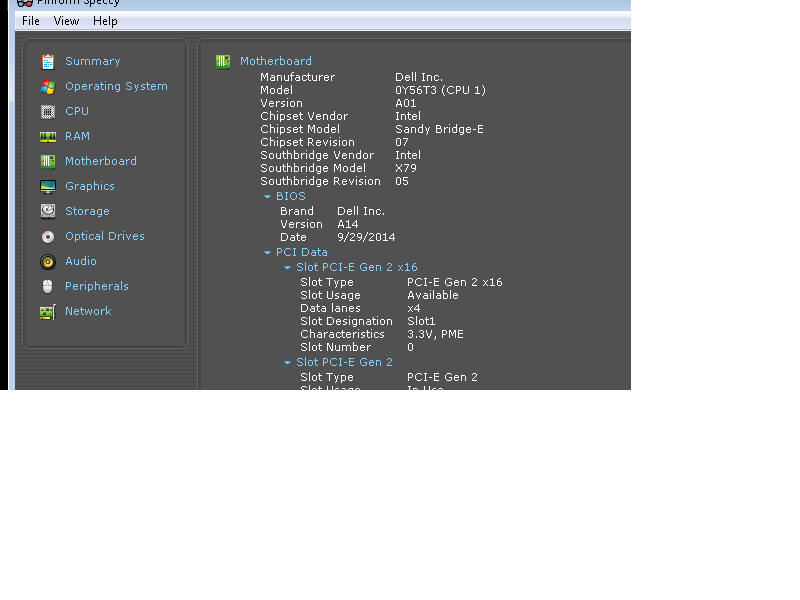@Fernando I have gotten the system to boot again with the de-capsuled firmware, what would you suggest as the course of action at this point? The ME maybe messed up as the CTRL+P message is still there.
That is fine.
Check the ME region integrity by running the MEManuf tool.
I’m guessing this will need to be run from windows on the host machine? I cannot boot from the nvme drive so I am unable to load any OS…
@applepi :
You should better ask plutomaniac about how to recover your system. He is the expert regarding these problems.
Okay but, as far as replacing modules how do I go about doing this so that the machine can actually boot? I followed the guide other than deleting the satadriver module and it would not boot.
@applepi :
Absolute priority should now have the repair of your system. I don’t think,that the inseretion of the NVMe module has caused your current problems.
Once everything is working fine again, you can check, whether your SSD is now bootable.
By the way: Today I have added a guide about how to install Win10 onto an NVMe SSD to the start post of this thread.
MEManuf passed all areas. So it doesn’t seem to be an ME issue after all though the message is still there.
@applepi :
Thanks for your feedback.
Since I have never heard about such error message, can you post a picture of it?
Are you now able to enter the BIOS?
Fernando, you homepage is very informative, thanks for your engangement.
I’d like to mod an Asus PZ9 PE Board, it comes with two 2011 sockets and is a server/workstation board. It wasn’t a problem to follow the instructions on your first side.
Before I will try to flash my Bios, do you have an idea if these modules also ran on this platform ?? I am not deeply in hardware and don’t know what is needed to runn these uefi modules?
I already purchased a chep flash programmer and won’t start before i had a few working Roms in stock.
@stefan0815 :
Welcome at Win-RAID Forum!
AFAIK you only need to insert 1 single module named NvmeExpressDxE.
There is no guarantee, that the procedure will be successful with your special system, but I am pretty sure, that you will be able the get NVMe support (as all the other owners of an Intel X79 board).
Good luck!
Dieter (alias Fernando)
My System Build well need some time, i’ll promise to write if it is a succsess.
If not ill write anyway 
I am a little bit confused by the selection of Bios settings which could be related to the NVME disk.
Is a option ROM needed on the NVME drive (like on my “old” Revodrive with a SIL3124?)
Which options should i choose here?
And last but not least, is a uefi compatible grapics card needed?
None of them. The mainboard BIOS just should contain an EFI NVMe module (if not natively, it has to be inserted according the start post guide).
No, but you have to install the OS in UEFI mode (otherwise the EFI NVMe module cannot be loaded).
None of them.
No, this would only be required, if you want to boot in "clean" UEFI mode (CSM disabled).
Is the warning from the MMtol 5.0 "Saving secure capsule as unsigned" normal?
Sorry for these kind of "noob" questions. If everything works, i will paypal you a bear!
Just a quick success message drop:
I inserted NvmeExpressDxE into BIOS F11 of the Gigabyte GA-Z87M-D3H and I’m now running Windows 10 on a Samsung SM951 NVMe as the lone/system drive.
As the module didn’t fit inside the regular volume #2, I had to delete something. I went for these modules:
- OemLOGO
- MyOemLogo1
- MyOemLogo2
freeing 12KB total, allowing for the insertion of NvmeExpressDxE.
I didn’t notice any drawbacks so far, Windows installation instantly recognized the drive and finished in well under 10 minutes.
Thanks again to Fernando for the great and concise tutorial!
You should better use the AMI Aptio IV UEFI MMTool v4.50.
Furthermore you may have to use the ASUS USB Flashback feature (if your mainboard offers it) to get the modded BIOS successfully flashed.
It is fine, that you suceeded - congratulations!
Enjoy your NVMe SSD as system drive!
Wioth Tool version 4.51 id did not pass the security check in EZ Flash.
So should i ignore the warning in 5.0?
Greetings Stefan
You should read the start post of >this< thread.
If your mainboard doesn’t support the USB Flashback feature, you should follow CodeRush’s guide, which is >here<.
I just wanted to get some details that this might work.
I purchased 5 Intel SSD 750 AIC drives. I have 5 machines I’d like to use them in. They are all the same DELL Precision T5600s. In their day they were pretty nice machines.

I want to ask if Fernando’s lengthy post on “How to get full NVMe support for Intel Chipset systems from 6-Series up” is a viable option for this combination. And if there are any new steps or newer updates I need to be aware of.
Thanks for the time.
@Zeitz :
Welcome at Win-RAID Forum!
Yes, according to my knowledge the guide of the start post is valid for your project as well.
Although I am pretty sure, that you will get the Intel 750 NVMe SSDs working as bootable system drive (provided, that the OS will be installed in UEFI mode), there is no guarantee for a success.
Good luck!
Dieter (alias Fernando)
P.S.: Since your request has nothing to do with the Sub-Forum "Questions/Suggestiond regarding the Forum", I have moved your post into the matching thread of the "BIOS Modding" Forum section.